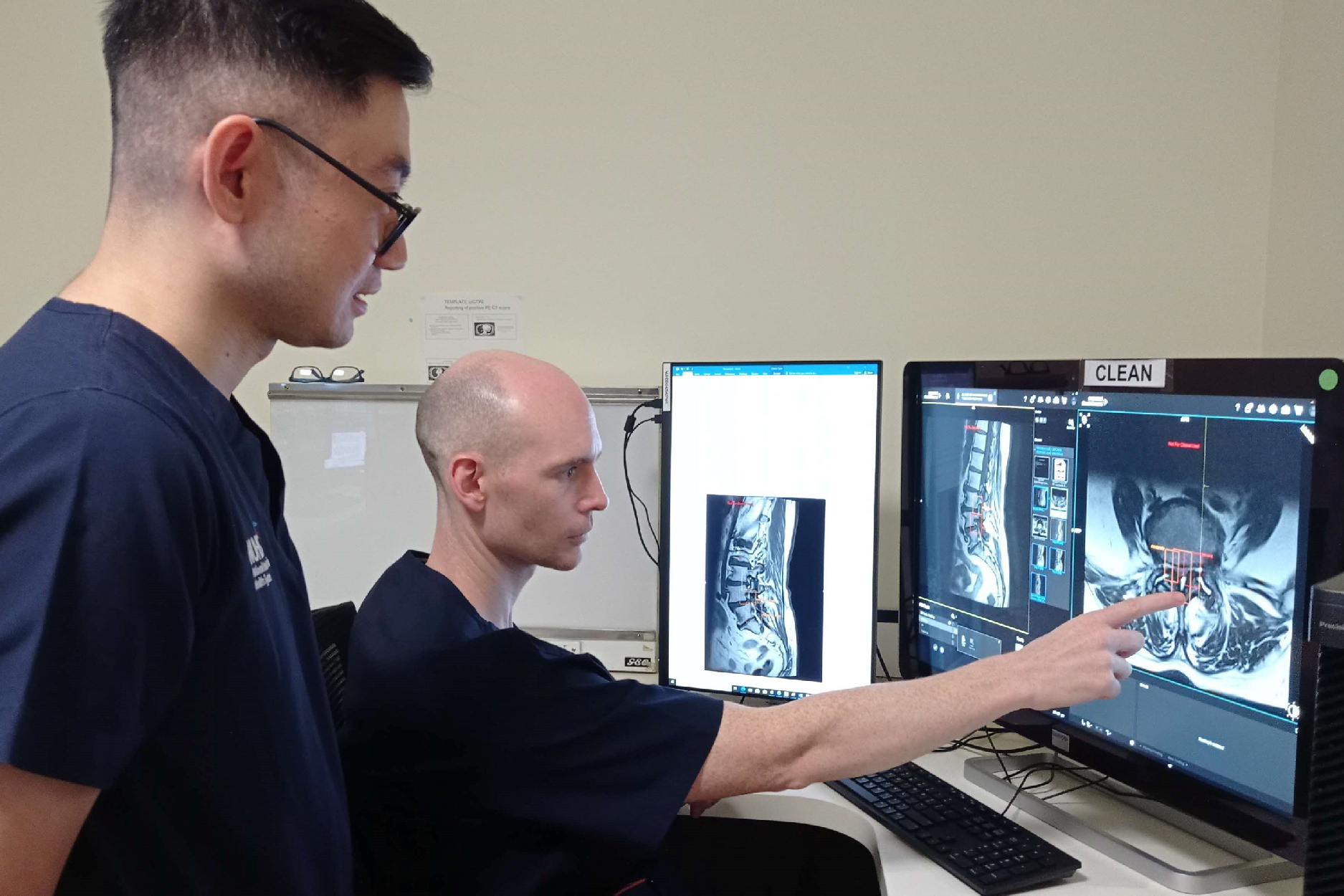Developed by the Department of Diagnostic Imaging at NUH, Spine AI
slashes the time needed for radiologists to interpret MRI scans by more
than half, enabling faster diagnosis and treatment of lumbar spinal stenosis.
Issue 6 | September 2024

 Subscribe and ensure you don't miss the next issue!
Subscribe and ensure you don't miss the next issue!
Singapore’s population is ageing rapidly. By 2030, one in four Singaporeans will be over 65, compared to one in 10 in 2010 — a demographic shift that will lead to an increase in age-related health conditions. Among these, lumbar spinal stenosis, a narrowing of the spinal canal in the lower back that leads to nerve compression, is common among older persons. It can cause significant discomfort, limiting mobility and quality of life.
This condition, which typically presents with pain and cramping in the legs and buttocks, relies on MRI scans for diagnosis. Against the backdrop of an ageing population, the volume of scans is expected to surge. This places greater pressure on radiologists to interpret these scans efficiently while maintaining diagnostic accuracy.
This has spurred healthcare professionals to turn to artificial intelligence (AI) technologies, such as Spine AI developed by the Department of Diagnostic Imaging at the National University Hospital (NUH). The AI-driven tool improves the consistency, accuracy and objectivity of MRI scan assessments, reducing the interpretation time by more than 50 per cent.
A better view of the spine
Diagnosing lumbar spinal stenosis is a tedious process.
“After an MRI of the lumbar spine, a radiologist will manually assess five spinal segments, each with five potential sites for stenosis, resulting in 25 regions that require analysis, which can take 10 minutes or more,” shares Dr Andrew Makmur, Consultant, Department of Diagnostic Imaging, NUH. “Reporting can be repetitive and time-consuming too. There are multiple grading systems for lumbar spinal stenosis, with a lack of standardisation.”
Spine AI, streamlines this process. Trained on lumbar MRI studies from 446 patients and comprising over 18,000 images, the tool uses deep-learning algorithms to automatically detect areas of stenosis in the lumbar spine and grade their severity.
“It overlays colour-coded boxes along each site, enabling radiologists to verify the findings quickly, and even auto-generates a report,” says Dr James Hallinan, Senior Consultant, Department of Diagnostic Imaging, NUH.
Efficiency gains
Spine AI brings a step change in diagnostic efficiency — reducing the time it takes to interpret a scan from 10 minutes to just three. A seven-minute reduction may appear modest; but it adds up quickly — NUH handles about 4,000 lumbar MRI scans annually, translating to approximately 466 hours saved. This frees up valuable hours for radiologists to focus on more complex cases.
Promisingly, Spine AI’s potential extends beyond Singapore’s shores. NUH has partnered with a leading medical technology company to optimise the tool’s user interface and user experience, aiming to bring it to the global market as a more efficient solution for managing spinal imaging at scale.
_____________________________________________________________________________________________________________________________
Like this article? Simply subscribe to make sure you don't miss the next issue of EnvisioningHealth!


















